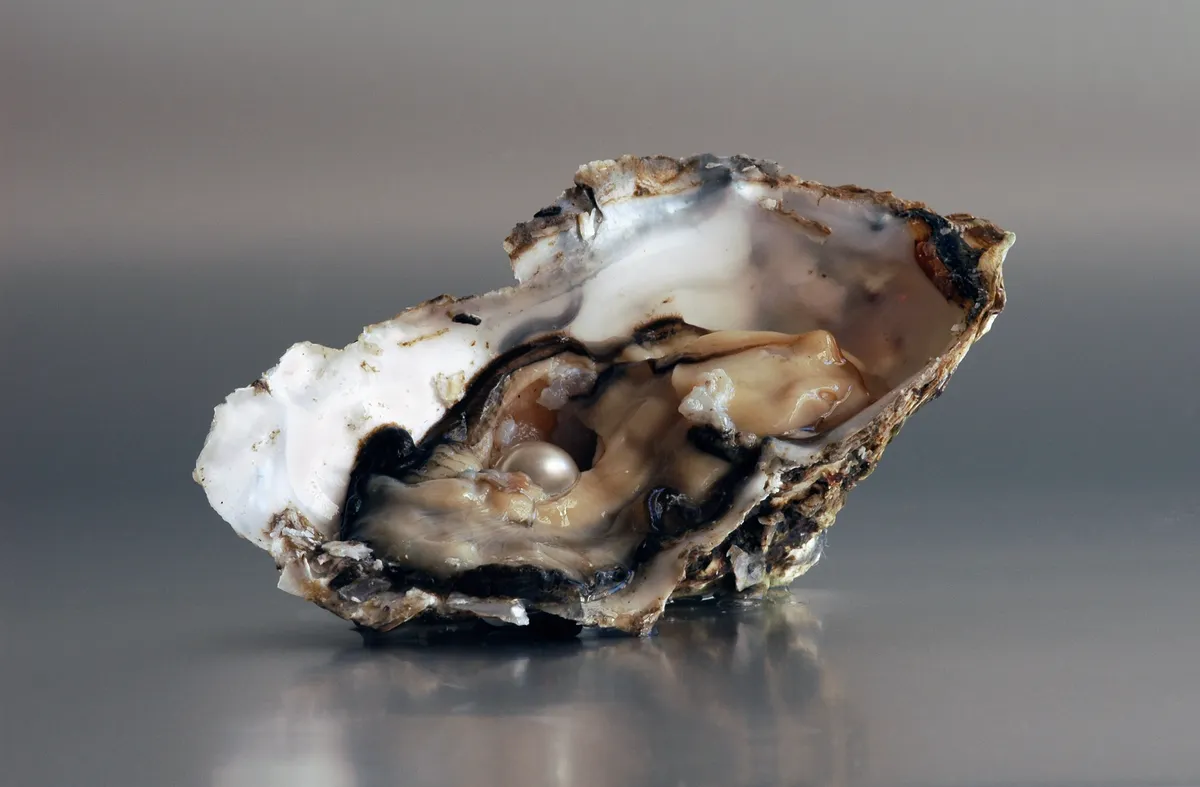What are pearls?
Pearls are organic mineral deposits that have been valued as precious gemstones throughout human history. They’re made by various molluscs, including snail- like gastropods such as abalones, but the majority of commercial pearls are harvested from bivalves (two-shelled molluscs), such as marine oysters and freshwater mussels.
What is a pearl made of?
The same materials used in a shell, the mollusc’s exoskeleton. Shells consist of the mineral calcium carbonate in an ordered arrangement to form a crystal, of either calcite or aragonite, and a matrix of organic molecules that includes a key protein called conchiolin. The crystals are layered and make up more than 95% of a pearl or shell.
What’s the difference between pearls and shells?
Besides overall shape, they differ in how their layers are deposited. The materials that make up a shell are secreted by the mantle, a large multi-purpose organ on a mollusc’s back. A shell can include three concentric layers made by different zones of the mantle: an inner layer called nacre, a porcelain-like ‘prismatic’ middle layer, and a protein-rich outer layer with ‘skin’ (periostracum).
Within a ‘pearl sac’, these same layers are deposited in the opposite order to that of the shell, so pearls are basically inside-out shells with nacre on the outside. Comparing mantles and pearl sacs shows they’re made using the same genetic instructions – there are no special genes for making pearls.

How does a pearl form naturally?
Contrary to popular belief, pearl formation is not normally triggered by a foreign object, such as a grain of sand. Instead, pearl formation typically begins after an injury that transports cells of the shell- forming mantle to an abnormal location (for example when the shell is pierced or a parasite burrows into a mollusc’s body). Those relocated cells then divide and develop into a ‘pearl sac’. Natural pearls are incredibly rare.
How are artificial pearls produced?
Cultured pearls are produced by humans transplanting mantle cells from a donor animal into another individual. The donor cells can even be put into a closely related species without tissue rejection by the host’s immune system.
Few natural pearls are a perfect sphere, but mantle tissue is often inserted with a spherical bead around which its minerals are deposited – an artificial pearl forms around that nucleus and its nacre is just an outer shell, whereas a natural pearl is made of shell alone. It takes at least a year before cultured pearls can be harvested.

What is mother-of-pearl?
It’s the common name for the nacre or ‘nacreous layer’ that causes a pearl’s surface to reflect light while giving it a translucent lustre. That pearlescent quality is arguably the most beautiful feature, but some pearls have little to no nacre, so they appear smooth and chalky.
Such ‘non-nacreous’ pearls include the largest natural pearl certified by the Gemological Institute of America: the Giga Pearl, which was formed by a giant clam, weighs 27kg and has an estimated worth of up to US$200 million (approximately £150 million).
Mother-of-pearl is sometimes used in architecture, furniture and statues, and antique mother-of-pearl items can be collected.
What creates a pearl’s colour?
Nacreous pearls can be anything from silver-white or orange to green or black (pink is the most desirable). Like the blue- on-brown eyes of peacock’s tail, a pearl’s colour isn’t due to pigments, but how its structure scatters light at a sub-microscopic level. In fact, the scientist who first observed organisms under a microscope in 1665, Robert Hooke, noted that peacock feathers consist of thin plates that resemble pearlescent shells.
Similarly, a pearl gets its ‘structural colour’ from tablets of aragonite crystals and conchiolin sheets within nacre: the tablets are stacked in a brick- wall pattern, which causes light particles (photons) to bounce around internally at a pearl’s surface – between crystal layers – like pinballs in a machine before the light reaches your eyes.
That scattering influences how light is transmitted, creating a colour filter, so a pearl’s appearance depends on the thickness of crystal layers in its nacre.
Main image: Halved fresh oyster with oyster pearl. © ImageBROKER/Alamy
